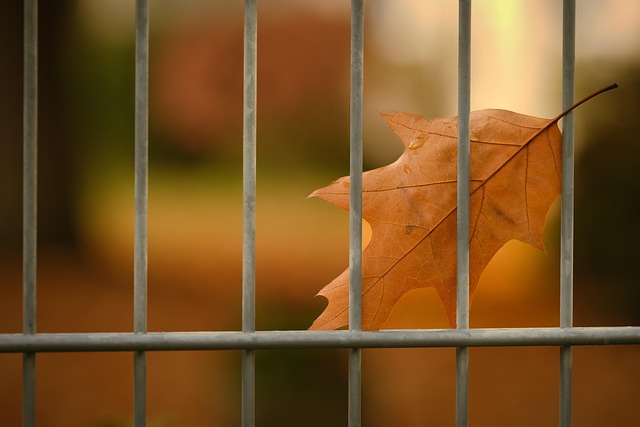Fences serve both functional and aesthetic purposes in our outdoor spaces, and proper care can ensure they look their best for years to come. This guide delves into the art of fence staining and sealing, essential practices for maintaining wooden fences. From understanding the benefits and exploring various stain types to mastering application techniques and long-term protection, you’ll discover the secrets to a vibrant, durable finish that enhances your outdoor environment.
- Understanding Fence Staining: Benefits and Types
- Preparing Your Wooden Fence for Staining
- Choosing the Right Stain: Color Options and Application
- Sealing Techniques to Protect Your Fence Long-Term
- Maintenance Tips for Lasting Results
Understanding Fence Staining: Benefits and Types
Fence staining is an essential process for maintaining and enhancing the appearance of wooden fences. It involves applying a protective coat of pigment to the fence’s surface, which not only improves aesthetics but also offers several functional advantages. The primary benefit is prolonging the lifespan of wood by shielding it from the elements, such as sunlight, rain, and snow, that can cause fading, cracking, and rot.
There are various types of fence staining options available, each with its unique characteristics. Water-based stains are popular for their low odor, quick drying time, and environmentally friendly nature. They offer good coverage and a range of colors but may not be as durable as other options. Oil-based stains, on the other hand, provide exceptional durability, protection against moisture, and a deep, rich color that can last for several years. These stains take longer to dry but are more resilient to fading and wear over time.
Preparing Your Wooden Fence for Staining
Before applying any stain or sealer to your wooden fence, proper preparation is key to achieving a long-lasting, high-quality finish. Start by inspecting the fence for any signs of damage, rot, or peeling paint. Repair or replace damaged sections to ensure even coverage during staining. Clean the fence thoroughly using a pressure washer or a stiff brush to remove dirt, mold, and mildew. This step is crucial as it allows the stain to adhere better to the wood’s surface.
Once cleaned, sand the fence gently to smooth out any rough spots and create a slightly textured surface. Use a fine-grit sandpaper suitable for outdoor applications. Dust off the fence after sanding, then check for any missed spots or areas that require additional attention. Moisturize the wood with a water-based sealer or primer designed for exterior use to fill in any pores and enhance the stain’s absorption. This final preparation step ensures an even color distribution and longevity of your fence’s new look.
Choosing the Right Stain: Color Options and Application
Choosing the right stain is the first step in fence staining and sealing. It’s crucial to consider both aesthetics and functionality. On one hand, different colors offer a variety of looks, from natural wood tones to rich, dark shades. You might opt for a solid color or a rustic, distressed finish that enhances your outdoor space’s unique character. On the other hand, the type of stain (oil-based, water-based, or UV-resistant) and its application method (brushing, rolling, or spraying) play significant roles in durability and ease of use. Water-based stains are generally easier to apply and emit fewer fumes, while oil-based options offer superior protection against fading. UV-resistant stains are a must for exterior applications, as they safeguard against color bleeding caused by prolonged sun exposure.
When selecting a stain, consider factors like your fence’s material (cedar, pine, or composite), climate, and intended use. For instance, if you live in a humid area, opt for a water-repellent or rot-resistant formula. Regular maintenance is easier with semi-transparent stains that allow the wood grain to show through, as they require less frequent reapplication compared to solid colors. Always follow manufacturer instructions regarding application techniques and recommended intervals for touch-ups to ensure your wooden fence stays looking its best for years to come.
Sealing Techniques to Protect Your Fence Long-Term
When it comes to protecting your wooden fence, sealing is an essential step beyond staining. There are several techniques available, each offering unique benefits tailored to different climates and fence types. For areas with high humidity, water-based sealers are ideal as they repel moisture effectively. These sealers are also low odor and environmentally friendly. On the other hand, for harsher conditions, oil-based sealers provide superior protection against UV rays and extreme temperatures, extending the lifespan of your fence.
Regular reapplication is key to long-term protection. Most manufacturers recommend sealing your fence every one to two years, depending on factors like exposure and sealer type. Using a brush or sprayer for application ensures even coverage, preventing missed spots. This routine maintenance not only preserves the aesthetics of your wooden fence but also safeguards it from rot, decay, and weather damage.
Maintenance Tips for Lasting Results
Regular maintenance is key to keeping your fence looking its best and ensuring the stain and seal remain effective. Start by cleaning the fence at least once a year to remove any built-up dirt, moss, or algae. Use a soft brush and mild detergent, then rinse thoroughly with water. Check for loose or damaged boards, and repair as needed to prevent water damage. Reapply the stain and sealant every 2-3 years, depending on exposure to weather conditions, to maintain optimal protection. Consistent care will not only extend the life of your fence but also preserve its aesthetic appeal.
